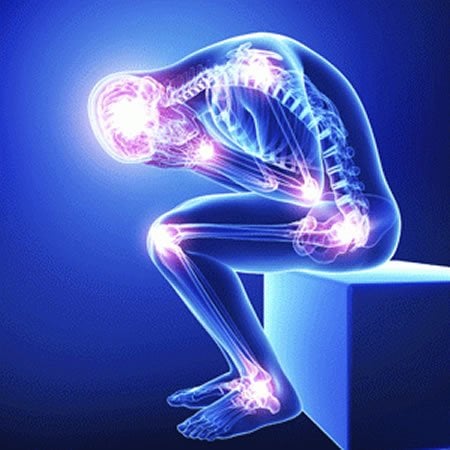A new study at the Montreal Neurological Institute and Hospital -The Neuro, at McGill University and the MUHC, might finally provide a new direction for research seeking to help patients suffering from neuropathic pain.
Chronic pain results from disease or trauma to the nervous system. Damaged nerve fibres with heightened responses to normal stimuli send incorrect messages to pain centres in the brain. This phenomenon, called “peripheral and central sensitization” is one of the key mechanisms involved in the condition which touches people with diabetes, cancer, and those suffering from multiple sclerosis, among others.
The study, published in the September issue of the Journal of Neuroscience, provides insights into the role of the hyperpolarization-activated cyclic nucleotide-gated (HCN) channels, which control the transmission of pain signals to a particular region of the brain, the anterior cingular cortex (ACC), identified as the most consistently stimulated region in pain processing.

“We were able to show that reducing hyperexcitability of the ACC by blocking the HCN channels had analgesic effects – basically the feelings of pain were dramatically decreased. Our study has revealed one important mechanism linking chronic pain to abnormal activity of the ACC and it provides a cellular and molecular explanation for the overstimulation of neurons in the prefrontal cortex. This gives us new perspectives on therapeutic strategies that could target the HCN channels to help relieve chronic pain,” says Dr. Philippe Séguéla, Professor in the department of Neurology & Neurosurgery and senior author of the study.
Recent neuroimaging studies investigating the role of the prefrontal regions of the brain in neuropathic pain have shown how emotional, psychological and cognitive factors can influence pain perception.
“The ACC has been shown to be a key centre to cognitive functions linked to memory and affective functions involved in feelings and emotions. We know that patients who suffer from chronic pain experience impairment of their working memory, difficulties focusing on certain tasks and may suffer from depression and anxiety. Our findings open new doors to research possible treatment of these debilitating symptoms that are linked to chronic pain.” says Dr. Séguéla.
Funding: The study, conducted by Philippe Séguéla and collaborators at the Montreal Neurological Institute and the Alan Edwards Center for Research on Pain, was supported by grants from the Canadian Institutes of Health Research, the Fonds de Recherche du Québec- Santé and the Louise and Alan Edwards Foundation.
Source: McGill University
Image Source: The image is adapted from the McGill press release
Original Research: Abstract for “Peripheral Neuropathy Induces HCN Channel Dysfunction in Pyramidal Neurons of the Medial Prefrontal Cortex” by Steven Cordeiro Matos, Zizhen Zhang, and Philippe Séguéla in Journal of Neuroscience. Published online September 23 2015 doi:10.1523/JNEUROSCI.0799-15.2015
Abstract
Peripheral Neuropathy Induces HCN Channel Dysfunction in Pyramidal Neurons of the Medial Prefrontal Cortex
Neuropathic pain is a debilitating condition for which the development of effective treatments has been limited by an incomplete understanding of its molecular basis. The cationic current Ih mediated by hyperpolarization-activated cyclic nucleotide-gated (HCN) channels plays an important role in pain by facilitating ectopic firing and hyperexcitability in DRG neurons, however little is known regarding the role of Ih in supraspinal pain pathways. The medial prefrontal cortex (mPFC), which is reported to be involved in the affective aspects of pain, exhibits high HCN channel expression. Using the spared nerve injury (SNI) model of neuropathic pain in Long–Evans rats and patch-clamp recordings in layer II/III pyramidal neurons of the contralateral mPFC, we observed a hyperpolarizing shift in the voltage-dependent activation of Ih in SNI neurons, whereas maximal Ih remained unchanged. Accordingly, SNI mPFC pyramidal neurons exhibited increased input resistance and excitability, as well as facilitated glutamatergic mGluR5-mediated persistent firing, compared with sham neurons. Moreover, intracellular application of bromo-cAMP abolished the hyperpolarizing shift in the voltage-dependent activation of Ih observed in SNI neurons, whereas protein kinase A (PKA) inhibition further promoted this shift in both SNI and sham neurons. Behaviorally, acute HCN channel blockade by local injection of ZD7288 in the mPFC of SNI rats induced a decrease in cold allodynia. These findings suggest that changes in the cAMP/PKA axis in mPFC neurons underlie alterations to HCN channel function, which can influence descending inhibition of pain pathways in neuropathic conditions.
SIGNIFICANCE STATEMENT Recent studies investigating the role of the medial prefrontal cortex (mPFC) in neuropathic pain have led to an increased awareness of how affective and cognitive factors can influence pain perception. It is therefore imperative that we advance our understanding of the involvement of supraspinal pain pathways. Our electrophysiological and behavioral results support an important role for hyperpolarization-activated cyclic nucleotide-gated channels and the cAMP/protein kinase A signaling axis in promoting hyperexcitability and persistent firing in pyramidal neurons of the mPFC in neuropathic animals. These findings offer novel insights, with potential therapeutic implications, into pathophysiological mechanisms underlying the abnormal contribution of layer II/III prefrontal pyramidal neurons to chronic pain states.
“Peripheral Neuropathy Induces HCN Channel Dysfunction in Pyramidal Neurons of the Medial Prefrontal Cortex” by Steven Cordeiro Matos, Zizhen Zhang, and Philippe Séguéla in Journal of Neuroscience. Published online September 23 2015 doi:10.1523/JNEUROSCI.0799-15.2015






